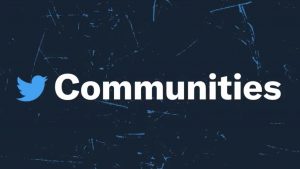Ways in which marketers can leverage Twitter communities in their strategy
According to a 2019 survey, 40% of marketers believe private community groups are becoming more important. And 23% of consumers agree with them. LinkedIn and Facebook have long implemented private groups within their platforms while Instagram and Twitter haven’t yet offered that feature.
That was until Sept. 2021 when Twitter announced that it was testing its own subcommunity platform called Twitter Communities. Let’s take a look at how it works and how it can help brands connect with their target audience.

This experiment is Twitter’s latest attempt to help connect users. While hashtags, Twitter Lists, the “Moments” and “Topics” features can help surface conversations you’re interested in, it can be difficult to identify (and consistently engage with) users who share your interests.
Twitter Communities is meant to close that gap and provide one place for users to meet with users with whom they share personal and professional interests.
There are three types of users in Twitter Communities:
- Admins who own the Community and manage its members.
- Moderators who ensure the Community is safe, facilitate conversation, and connect like-minded people.
- Members who have been invited into the Community and now can engage with other members.
As a member, say you Tweet something to your Community. Anyone on Twitter can read, quote Tweet, and report it. However, only fellow members can interact with the Tweet, i.e.: Reply. A Community can be based on any interest (as long as it follows Twitter’s terms of service), anything from career and finance to pets and astrology. Currently, the platform is only available on IOS devices and on the web, with Android users having read-only access. However, Twitter does have plans to expand to Android devices soon.
Benefit of using Twitter communities
Similar to LinkedIn Groups and Facebook Groups, Twitter Communities is another way for brands to reach their audiences.Because users will be connected by shared interests, brands can narrow down the Communities that align with their target audience and use it to connect with them.
We know that community building is key in building trust with users on social media, particularly with those who are near the top of the funnel. As such, using a platform like Twitter Communities helps brands connect with users and get a better sense of what resonates with them.
How to find Twitter communities
As it currently stands, you can only access Twitter communities if you are invited or if you are approved to be an admin to start your own. In that case, the Communities tab will show up on your Twitter app or on the sidebar of the web app. As a non-member, you can view the Community page and timeline if it has been shared with you but you cannot interact with the Tweets or request to join.

Because it’s in beta testing, Twitter has set up a request form where users can ask to become an admin or moderator. To qualify, your account must:
- Be public.
- Be at least six months old.
- Have a verified phone number or email address.
- Have two-factor authentication turned on.
- Not have a history of violating Twitter’s terms of service.
Once you are approved, you must continue to meet these eligibility requirements to maintain your privileges. With the HubSpot Marketing Hub, you can integrate your Twitter account, which allows you to schedule and publish Tweets and track your key metrics right from the platform.
How to leverage it?
Twitter Communities is another tool marketers can use to connect with their target audience and build a community around their brand. Brands should avoid using Twitter Communities as a way to promote products and/or services to specific groups of users. A good rule of thumb to follow with any social network is to focus on engagement, not promotion. While promoting your products and/or services is a natural part of building your brand awareness, it shouldn’t be your sole content strategy.
Instead, focus on connecting with your users by posting content they care about. With Twitter Communities, it’s even easier to accomplish this, as you can tailor your content to specific sub-audiences within your broader followers.
It’s also an opportunity to learn more about your users and see which topics they discuss, what their pain points are, what challenges they face, and what resonates with them.
Related Posts

Instagram Implements Advanced Protections for Teen Users.

5 Skills to Become a Successful Social Media Marketer

LinkedIn Adds AI Training Opt-out Option

What Video Editing Software Do Youtubers Use in 2024?

How VoIP Services are changing the Way We Make Calls






































